How to Master Warm Outreach? (With Actionable Examples)

Ani
Co-founder, CEO • 21 min read
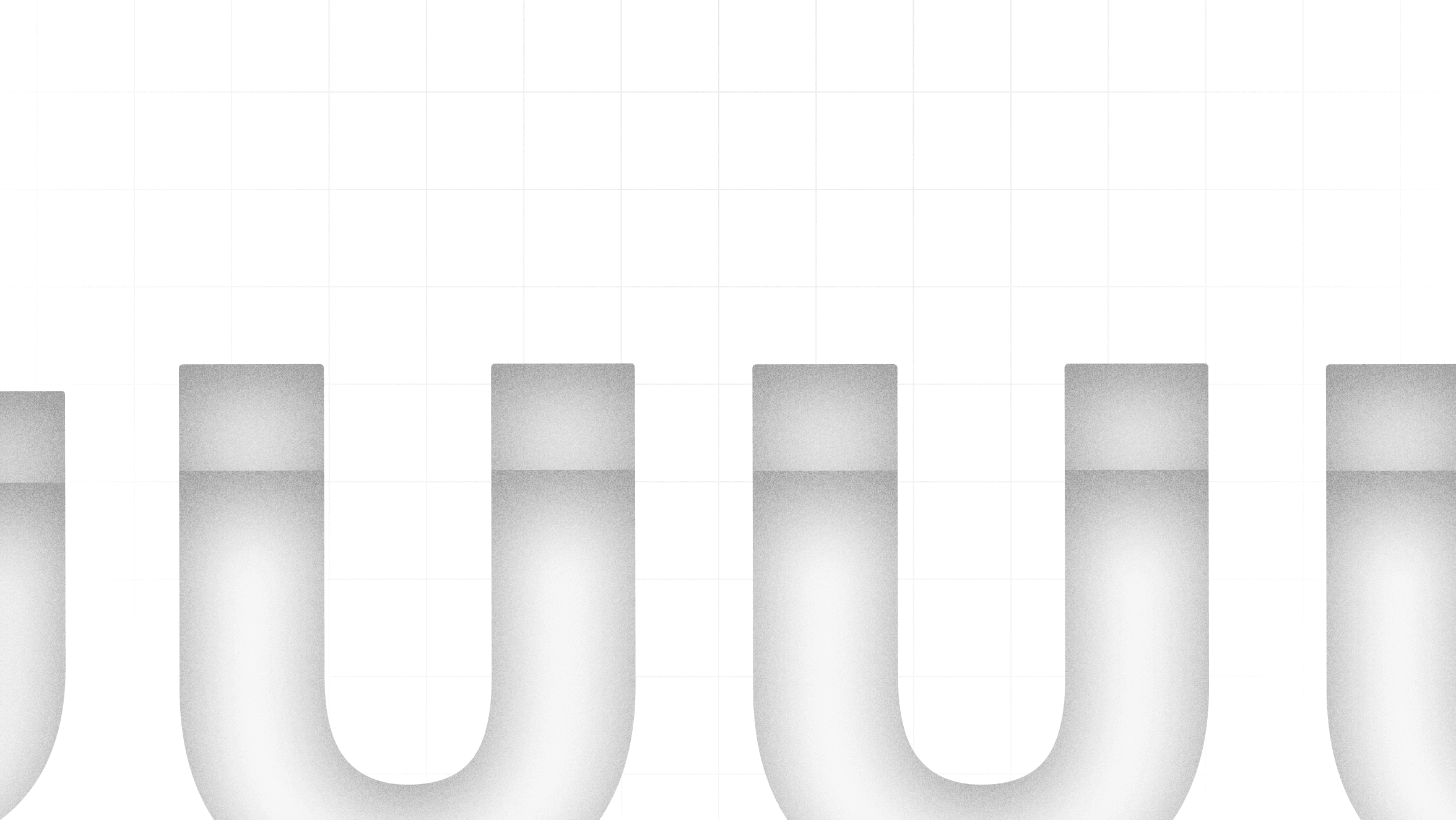
Let's play a word association game.
We say "sales outreach," what do you think?
- "Ugh, another templated LinkedIn message."
- "Delete before reading."
- "How did they even get my email?"
Well, here's the uncomfortable truth: 92% of cold outreach fails.
Not because the products are bad.
Or the potential customers don't need solutions.
But because we're doing it backwards.
The marketing world obsesses over cold outreach hacks - subject line tricks, timing tactics, follow-up frameworks.
Meanwhile, the smartest networkers are using a completely different playbook.
One that:
- Gets 5-8x higher response rates
- Feels human instead of salesy
- Actually makes people happy to hear from you
We’re talking about the art of warming up cold prospects before you ever hit "send."
The kind of outreach where your first message gets replies like:
"Thanks for reaching out - I was just thinking about this!
"Wow, perfect timing."
"I remember you from…”
And no, this isn't another "personalize with (First Name)" guide.
But how can you make outreach feel like reconnecting, not prospecting?
Let's get into the critical elements without any further ado.
What is Warm Outreach?
Cold outreach is like showing up uninvited to a party.
Warm outreach? That’s when the host introduces you.
At its core, warm outreach is the practice of engaging with warm leads through existing touchpoints before delivering a pitch.
It bridges the gap between strangers and trusted connections by using:
- Prior interactions (social media engagement, event attendance, mutual connections)
- Relevant value (content they’ve consumed, problems they’ve expressed)
- Strategic timing (trigger events like funding rounds, promotions, or published content)
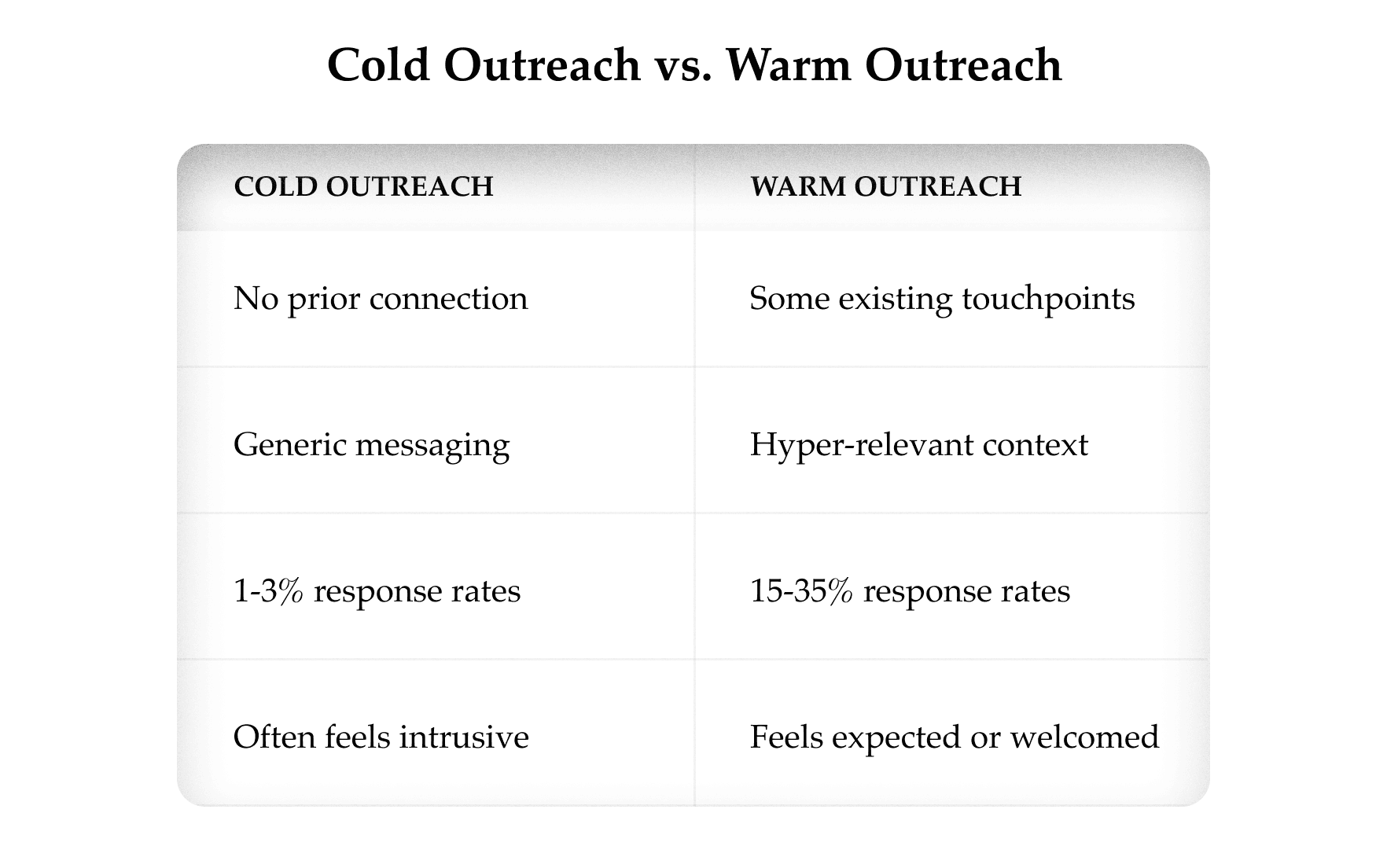
The Psychology Behind Warm Outreach
Three principles explain why this approach outperforms cold tactics:
The Familiarity Effect
People prefer and trust what they recognize. Even minor prior exposure (a like, comment, or shared connection) increases receptiveness.
Reciprocity in Action
Providing value first instead of a sales pitch (insights, resources, or engagement) creates a subconscious obligation to respond.
Trigger-Based Relevance
Outreach tied to a prospect’s recent activity (new role, posted challenge, company milestone) feels timely rather than random.
Warm emails see 5x higher open rates than cold emails (HubSpot), and warm introductions make deals 40% more likely to close (Harvard Business Review).
Proven Warm Outreach Strategies That Convert
Outreach success isn’t about luck but rather strategy.
Most sales professionals don’t just send messages; they cultivate relationships before the first click of “send.”
Here’s your playbook for transforming cold contacts into loyal customers.
The Pre-Engagement Warm-Up
Familiarity breeds trust.
By establishing meaningful connections before pitching, you transition from “random stranger” to “recognizable contact.”
Tactics to Implement Today:
Social Proofing (The 2-Week Rule)
- LinkedIn Outreach: For 2-3 weeks before outreach:
- Like 2-3 of their recent posts
- Comment meaningfully (add insights, not just “Great post!”)
- Share their content with your take (tag them when relevant)
- Twitter/X: Retweet with value-added commentary
- Newsletter Engagement: Reply to their company emails with thoughtful feedback
Example:
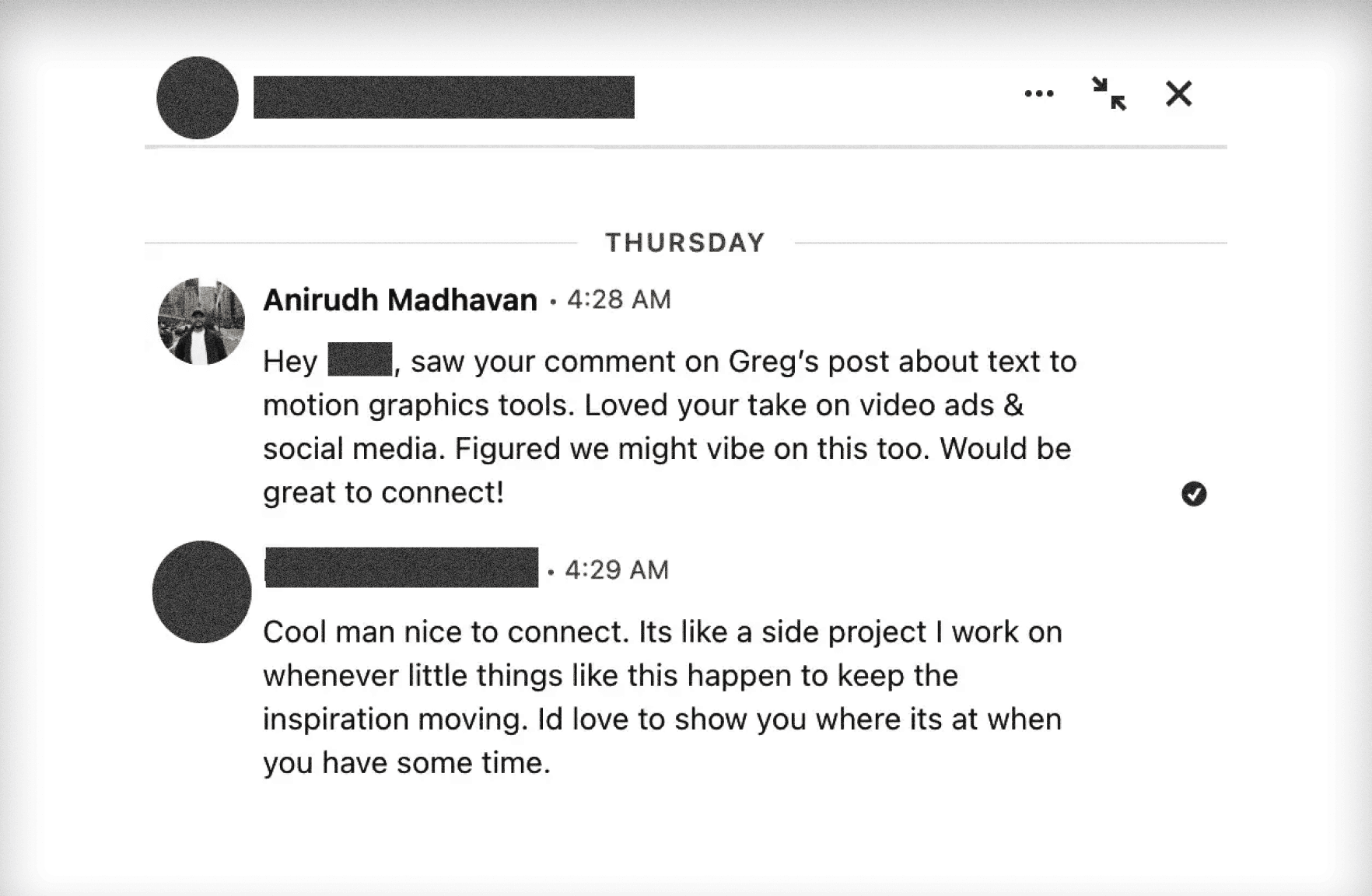
The Digital High-Five
Reference specific, recent activity to show genuine attention:
“Congrats on the <new funding/product launch>! Your comment about <specific detail> in the <interview/article> particularly stood out because...”
The Value-First Hook
Reciprocity is powerful. Providing value first makes your eventual ask feel natural rather than salesy.
Tactics That Convert:
LinkedIn Comment Parasite
- Customized Content: Share something uniquely relevant and valuable content:
Example:
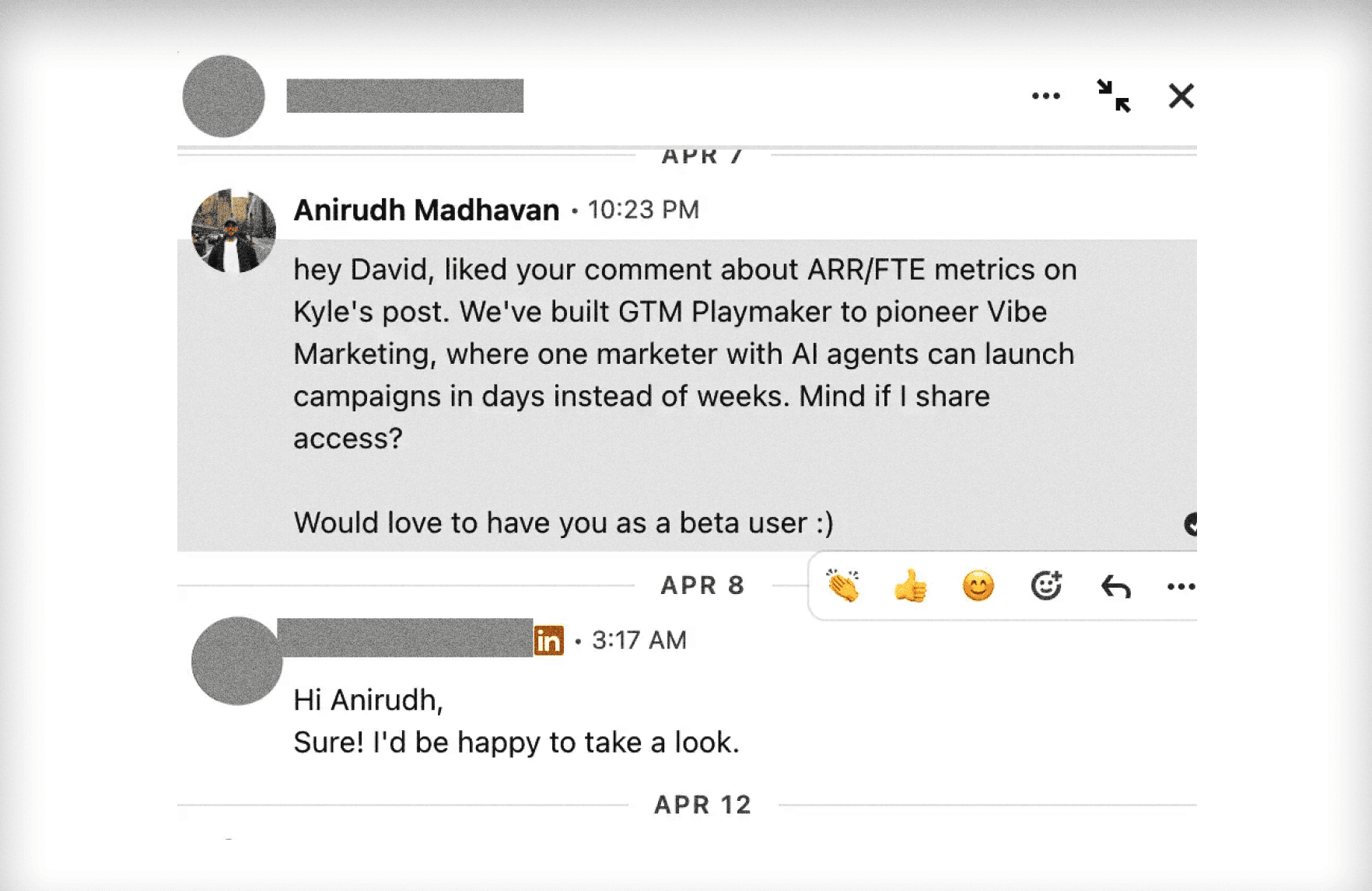
A Strategic Compliment
- Specific > Generic:
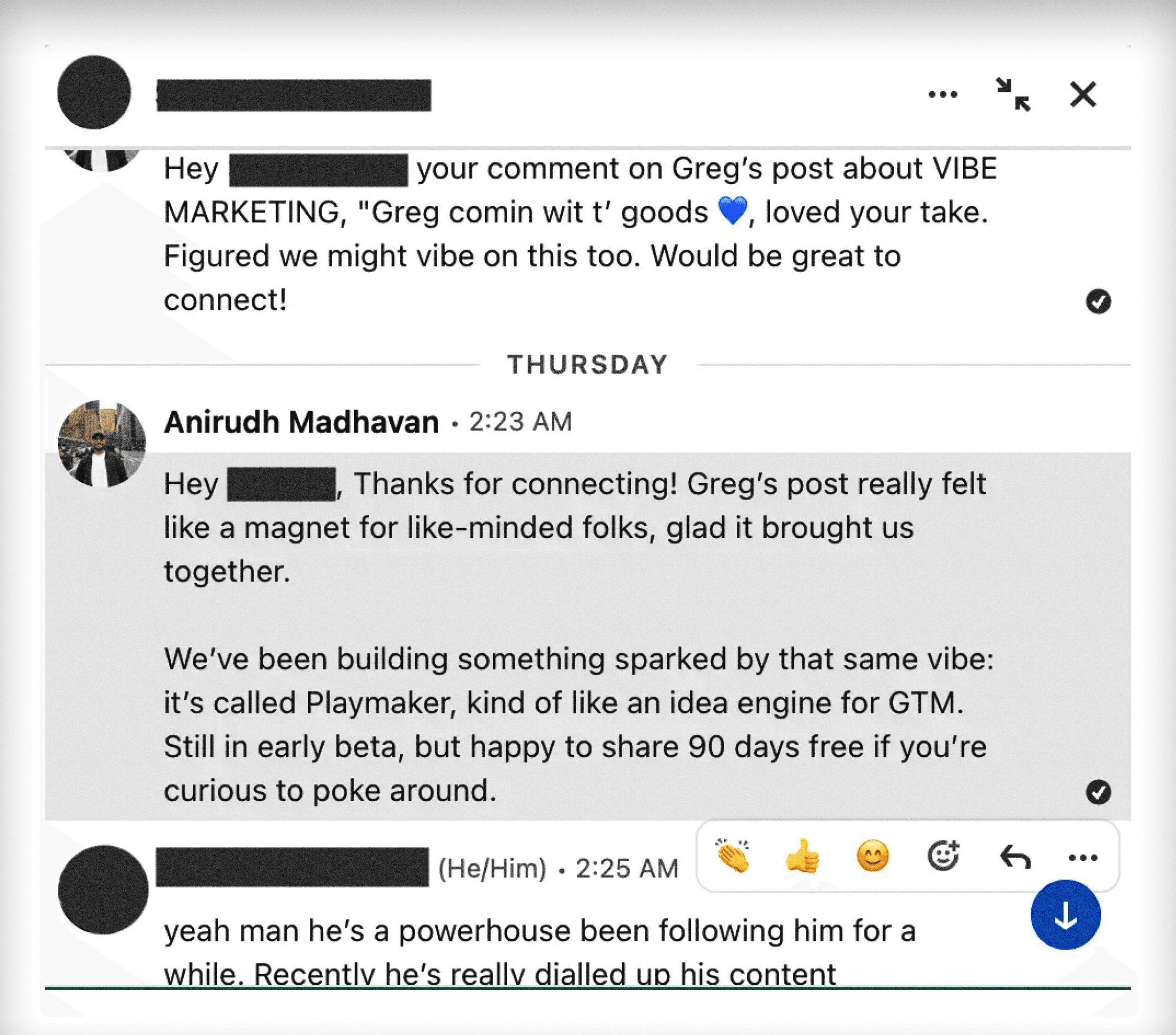
A “No Pitch” Pitch
Not every outreach has to be a direct pitch. Try to keep the conversation light and breezy!
Example:
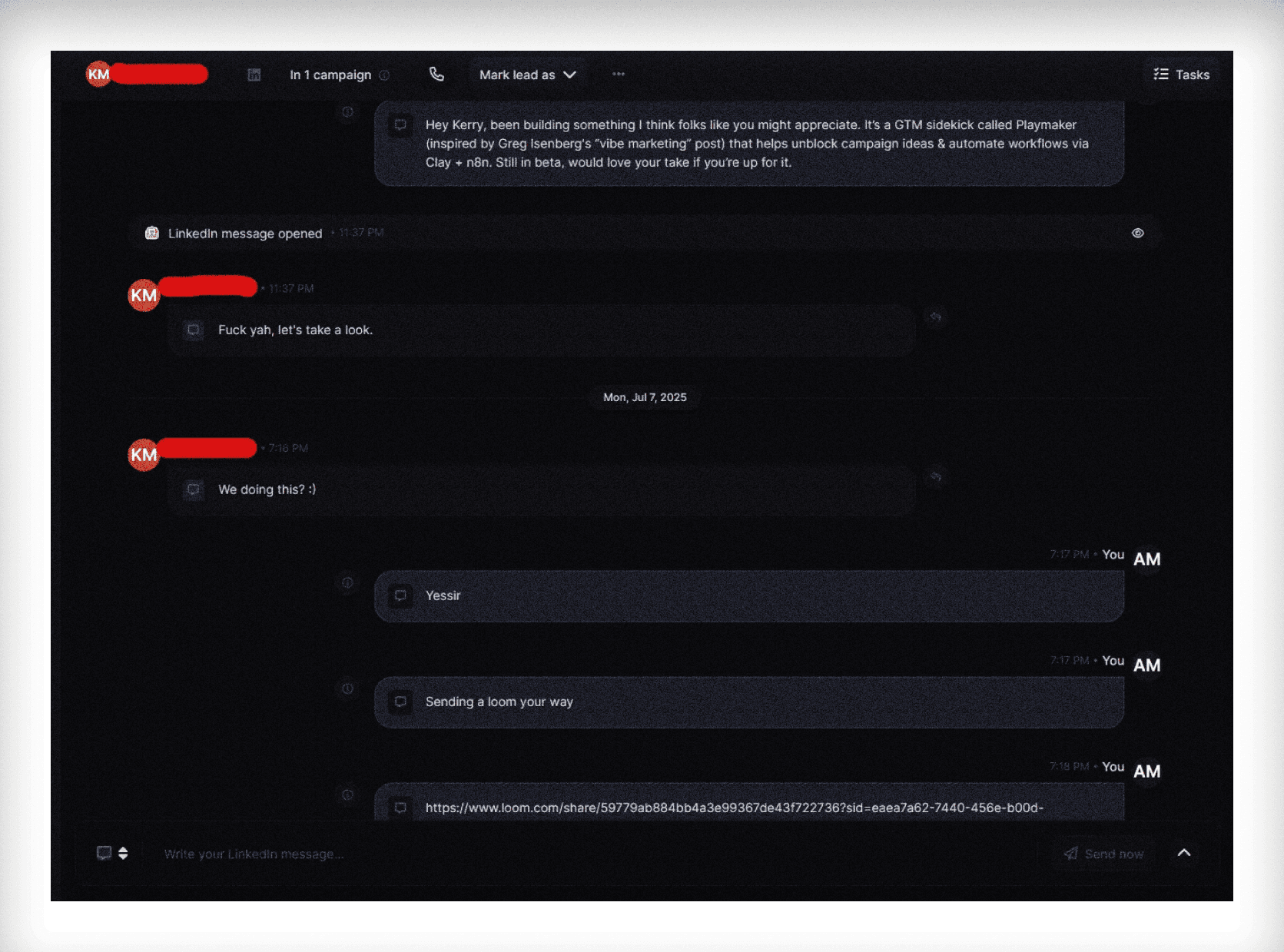
The Re-Engagement Playbook
Past contacts are warmer than new ones, they just need the right trigger.
When & How to Reconnect:
Trigger-Based Follow-Up Messages
- Company Triggers: Funding rounds, leadership changes, product launches
- Personal Triggers: Promotions, published articles, speaking engagements
- Industry Triggers: Regulatory changes, new competitors, trend shifts
Template:
“Hi <Name>,
When we last spoke in <Month>, you mentioned <specific challenge>. With <recent trigger event>, I thought of our conversation, we’ve since helped <similar company> achieve <result> by <solution>.
If this is still a priority, I’d love to share how they made it work.”
A “Breakthrough Update”
For contacts who went dark after initial interest:
“Hi <Name>,
We last left off discussing <topic> in <month>, since then, we’ve < improvement/result>. Given your focus on <their goal>, thought this update might be relevant.
Would it make sense to revisit?”
Metrics for Cold and Warm Outreach
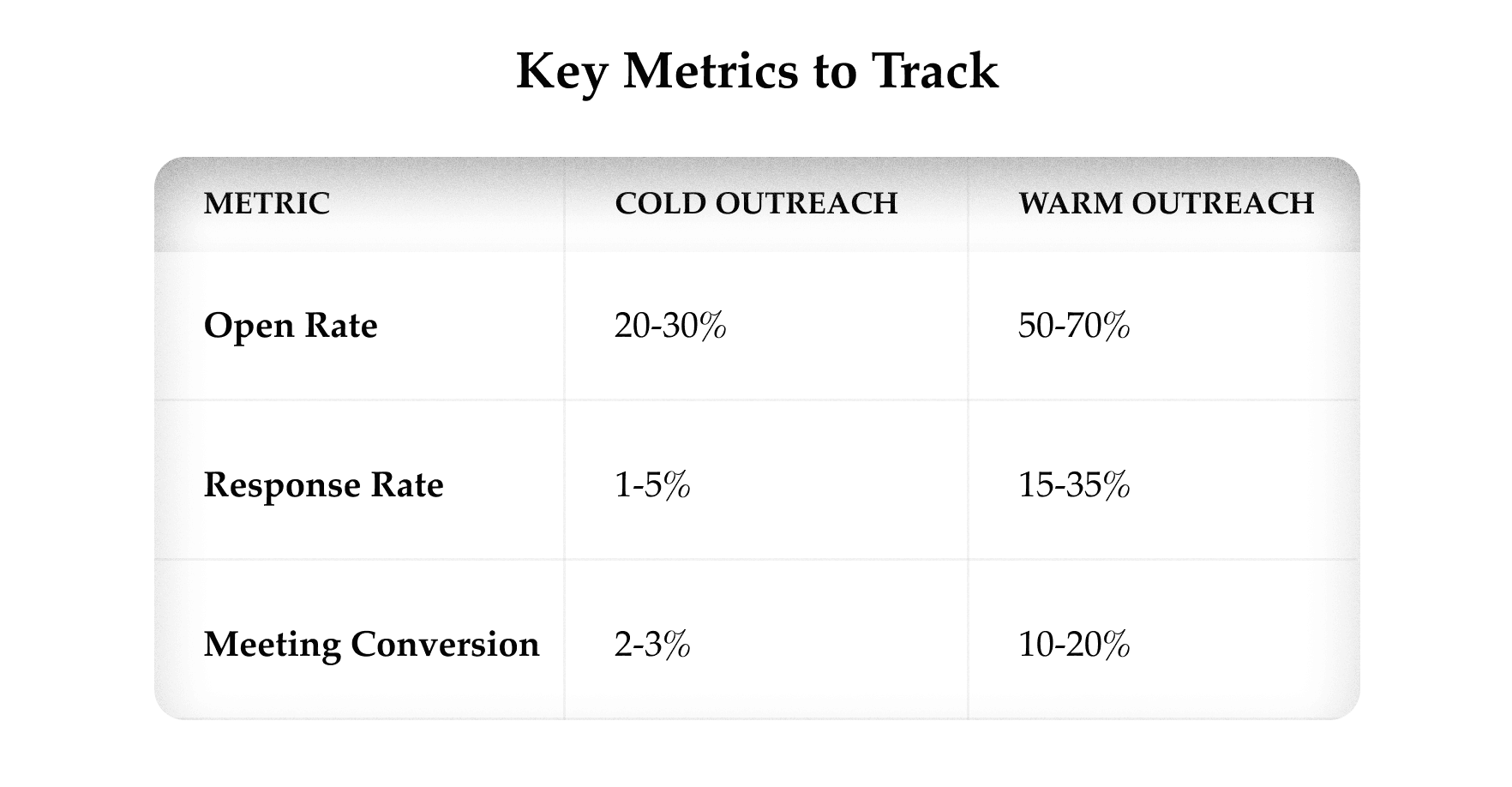
Tools to Enhance Warm Outreach
Outreach at scale doesn’t have to mean robotic, generic messaging.
The right tools help you systematize warm prospects, turning manual relationship-building into a repeatable process, without sacrificing authenticity.
Here’s your powerful tool kit for smarter, warmer outreach at every stage:
CRM & Contact Management: Track Every Touchpoint
Why It Matters: Warm outreach relies on context. A CRM helps you log interactions, set reminders, and personalize follow-ups.
Top Tools:
HubSpot CRM (Free)
- Log emails, calls, and social interactions in one place
- Set automated reminders for follow-ups (e.g., "Follow up 3 days after they engage with content")
- Track email opens/clicks to gauge interest
Salesforce (Enterprise)
- Advanced lead scoring to prioritize warmest contacts
- Integrates with LinkedIn Sales Navigator for enriched profiles
Clay (Next-gen CRM)
- Aggregates data from LinkedIn, emails, and mutual connections
- AI suggests personalized icebreakers based on a contact’s activity
Pro Tip: Tag contacts with engagement levels (ex: "Cold," "Warm: Liked 2 Posts," "Warm: Mutual Connection").
LinkedIn Prospecting
LinkedIn is the #1 channel for B2B companies' warm outreach; if used strategically.
Must-Have Tools for LinkedIn outreach:
LinkedIn Sales Navigator ($99+/mo)
- Filter by 2nd-degree connections (warm intro opportunities)
- Get alerts when prospects post, change jobs, or mention keywords
- Save lead lists for targeted engagement
Dux-Soup (Freemium)
- Automate profile visits and track who views your profile back
- Schedule auto-engagement (likes/comments on new posts)
Taplio ($29+/mo)
- AI-generated personalized comment suggestions on prospects’ posts
- Schedule LinkedIn content to boost your own visibility
Pro Tip: Before messaging, engage with 3+ of their posts; this increases response rates by 40 %+.
Email Warm-Up & Tracking
Even warm emails fail if they’re not seen.
These tools ensure your emails land and get replies.
Key Tools:
Hunter.io (Free/$49+)
- Verify email addresses to avoid bounces
- Find personalized email formats for any company
Mixmax (Free/$9+/mo)
- Track email opens/link clicks
- Schedule automated follow-ups (e.g., if no reply in 5 days)
- Embed polls/calendars for higher response rates
Mailchimp (For Newsletters)
- Segment leads who open/click (these are warm leads)
- Automate nurture sequences based on engagement
Pro Tip: If a prospect opens your email 3+ times but doesn’t reply, send a light follow-up:
“Hey [Name], noticed you opened my last email, wondering if you’d like me to share more details or loop in a colleague?”
AI Assistants: Personalize at Scale
Why It Matters: AI can draft hyper-relevant messages by analyzing a prospect’s LinkedIn, company news, and past interactions.
Best AI Tools for Outreach:
ChatGPT (Advanced Data Analysis)
- Upload a LinkedIn profile and generate a personalized message in seconds
- Example prompt:
- “Write a 3-sentence email to [Name] at [Company]. Reference their recent post about [topic] and tie it to our [solution].”
Crystal Knows($29+/mo)
- Predicts a prospect’s communication style (e.g., direct vs. diplomatic)
- Suggests tone adjustments for higher reply rates
Smartwriter.ai ($49+/mo)
- Scrapes a prospect’s LinkedIn/blog to generate personalized icebreakers
Pro Tip: Always edit AI drafts to sound human, avoid robotic language.
Event & Trigger-Based Tools
Why It Matters: Timing is everything. These tools alert you when prospects are most receptive.
Key Tools:
Google Alerts (Free)
- Track when a prospect/company is mentioned in news
- Example trigger: “(Prospect Name) promoted to (Role) at (Company)”
Owler (Freemium)
- Get funding alerts, leadership changes, and competitor moves
6sense (Enterprise)
- Identifies accounts actively researching solutions like yours
Pro Tip: Outreach within 48 hours of a trigger event (promotion, funding, product launch).
The Human Touch Checklist
Even with tools, avoid these pitfalls:
✖️ Over-automating (e.g., sending generic AI messages)
✖️ Skipping research (tools help, but you still need context)
✖️ Ignoring replies (manual follow-ups build trust)
Ideal Workflow:
- Find leads (Sales Navigator)
- Warm up (Dux-Soup + Taplio)
- Send personalized emails (Mixmax + AI)
- Track & follow up (CRM)
How to Nurture Warm Leads Without Being Pushy
The fortune is in the follow-up, but only if you do it right.
Most professionals make one of two mistakes:
- Ghosting after the first touch (wasting all that warming-up effort)
- Spamming with generic "checking in" messages (killing the relationship)
Here's the data-backed approach to persistent but professional follow-ups that convert warm leads into real opportunities.
Why Follow-Ups Make or Break Warm Outreach
- 80% of sales require 5+ follow-ups (Brevet)
- Properly executed sequences can increase response rates by 300% (Yesware)
- Yet 44% of salespeople give up after just one attempt (Harvard Business Review)
The key is adding new value with each touch.
The 5-Touch Follow-Up Sequence (With Templates)
Touch 1: Initial Outreach
(Already covered in previous sections - personalized, value-first message)
Touch 2: The Gentle Nudge (3-5 Days Later)
Strategy: Reference your first message + add new context
Template:
"Hi [Name],
Checking back on my last note about (specific topic) - in case it got buried. Since then, we've (new development: published research/helped similar company/noticed trend).
If this aligns with your priorities, I'd be glad to share more. If not, no worries - appreciate your time either way!"
Tool Tip: Use Mixmax/Mailtrack to only follow up if they opened your first email.
Touch 3: The Social Proof Boost (7-10 Days Later)
Strategy: Leverage third-party validation
Template:
"Hi (Name),
Quick update since we last connected - (Customer X) just achieved (result) using (your solution).
Given your focus on (their challenge), I thought this case study might resonate: (link).
Would it make sense to discuss how they overcame (specific obstacle)?"
Pro Tip: Attach a 1-page case study snippet rather than a full PDF.
Touch 4: The Trigger Event Follow-Up (10-14 Days Later)
Strategy: Capitalize on fresh momentum
Template Options:
→ For company news:
"Congrats on (recent achievement)! This actually relates to what we discussed - many companies in (their industry) are now using (solution) to (address new challenge created by this event)."
→ For personal triggers:
"Just saw your great post about (topic) - we've been helping (similar personas) tackle this exact issue through (specific approach). Would you be open to a quick chat next week?"
Tool Tip: Set up Google Alerts for real-time trigger notifications.
Touch 5: The Polite Off-Ramp (21-28 Days Later)
Strategy: Give an easy out while leaving the door open
Template:
"Hi (Name),
I'll assume timing isn't right to explore this further - I'll stop pinging you for now.
That said, we're seeing more (industry) leaders adopt (solution) for (specific use case). If this becomes relevant, feel free to reach out anytime.
Either way, wishing you continued success with (their project/initiative)!"
Why This Works:
- Removes pressure while positioning you as helpful
- 11% of leads respond to this "breakup email" (Outreach.io)
Advanced Follow-Up Tactics
The "Forwarded Email" Hack
For important contacts who went dark:
- Forward your original email with a new subject line:"Fwd: Following up - should I close this thread?"
- Add just 1-2 lines at the top:"Wanted to check one last time before archiving this - is (topic) still on your radar?"
Increases response rates by 27% (Boomerang)
The LinkedIn Voice Note
Instead of another email:
- Send a personalized 30-second voice message on LinkedIn
- Works best after 2+ email attempts
The "Drop and Stop" Rule
If no response after 5 touches:
- Wait 60-90 days
- Re-engage with fresh context (new case study, feature, or trigger event)
Metrics That Matter
Track these in your CRM:
✔️ Response Rate by Touch (Identify your most effective message)
✔️ Time-to-Reply (Optimize spacing between touches)
✔️ Conversion by Lead Source (Double down on what works)
Common Follow-Up Mistakes to Avoid
✖️ Repeating the same message (Add new value each time)
✖️ Apologizing for following up (You're providing value, not bothering them)
✖️ Ignoring engagement signals (If they opened all emails but didn't reply, try a different channel)
Handling Objections in Warm Outreach
Even the warmest outreach encounters objections. The key? Anticipate them and respond with empathy, not pushiness.
Here’s how to handle the 5 most common objections while keeping the relationship intact:
"I’m Not Interested"
They don’t see the relevance yet.
How to Respond:
- Acknowledge + Reframe
“Totally understand, most people aren’t interested until they see how it solves their specific challenge. Would it be helpful if I shared a 2-minute case study of how (similar company/person) used this to (result)?”
- Exit Gracefully
“No problem at all! If (specific problem) ever becomes a priority, here’s a link to our resource hub [link]. Either way, appreciate your time.”
Pro Tip: If they engage with your resource later, they’re warming up, reconnect in 2-3 weeks.
"We’re Already Working With Someone"
They have an existing solution (but might still have pain points).
How to Respond:
- Ask About Their Experience
“That’s great to hear! Curious: how’s (vendor) working for you on (specific use case)? We often hear from others in (industry) that (common challenge) still comes up even with existing tools.”
- Position as a Backup
“Makes sense. If you ever want a second opinion on (specific area), we audit (X) for free, no pressure to switch. Might be useful down the road.”
When to Follow Up:
- In 3-6 months (vendor contracts often renew then)
- When they post about related challenges on LinkedIn
"Now’s Not a Good Time"
They’re busy but might be open later.
How to Respond:
- Pinpoint Timing
“Understood, when would be better to reconnect? Q3? After (specific event)?”
- Offer Asynchronous Value
“No rush at all. Here’s a (guide/video) on (topic) you can review whenever makes sense. I’ll circle back in (timeframe) unless you’d prefer I wait longer.”
Pro Tip: Set a CRM reminder for their suggested timeline.
"This Isn’t a Priority Right Now"
They don’t feel urgency.
How to Respond:
- Connect to Their Goals
“Got it, what is your top priority this quarter? If your (solution) could free up time/resources for that, would it be worth a quick chat?”
- Trigger-Based Follow-Up
Wait until they mention related struggles publicly, then:“Noticed your post about (challenge), this is exactly what we helped (Customer) solve last month. Here’s how they did it (link).”
"We Don’t Have Budget"
They assume cost is prohibitive.
How to Respond:
- Separate Budget From Value
“Budget constraints are real, would it still be helpful to explore how others in the industry justified this? Often the ROI comes from (specific outcome).”
- Offer a Pilot
“Totally get it. Some clients start with a (free/low-cost trial) just to prove the concept. Would that be an option?”
When to Circle Back:
- End of quarter/fiscal year (budgets often refresh)
- After funding rounds or revenue milestones
The Golden Rule of Objections
Refrain from arguing. Instead:
- Acknowledge their concern
- Ask clarifying questions
- Provide tailored next steps
Scaling Warm Outreach Across Your Team
Warm outreach only works if your entire team executes it consistently.
Here’s how to systematize it without losing authenticity:
Create a Playbook
- Templates Library: Store approved email/LinkedIn sequences in a shared drive (Notion, Google Docs)
→ Label by use case: Re-engagement, Mutual Connection Intro, Event Follow-Up
- Objection Handling Guide: Document responses to common pushbacks (like the ones above)
- CRM Standards: Agree on tagging conventions (e.g., “Warm - Engaged with 2+ Posts”)
Train for Authenticity
- Role-Playing Exercises: Practice turning objections into conversations
- AI-Assisted Personalization: Use tools like ChatGPT for Sales to generate drafts, but require manual editing
- Weekly Review: Have reps share winning messages in team meetings
Automate the Right Parts
Do Automate:
- Reminders for follow-ups
- Tracking engagement (email opens, LinkedIn profile visits)
- Trigger alerts (job changes, funding news)
Don’t Automate:
- Personalization (names, specific references)
- Responses to replies
- Relationship-building touches (comments, DMs)
Measure & Optimize
Track these team-wide metrics:
- Warm Response Rate (Goal: 25%+)
- Touchpoints to Conversion (Ideal: 3-5)
- Objection Frequency (Identify training gaps)
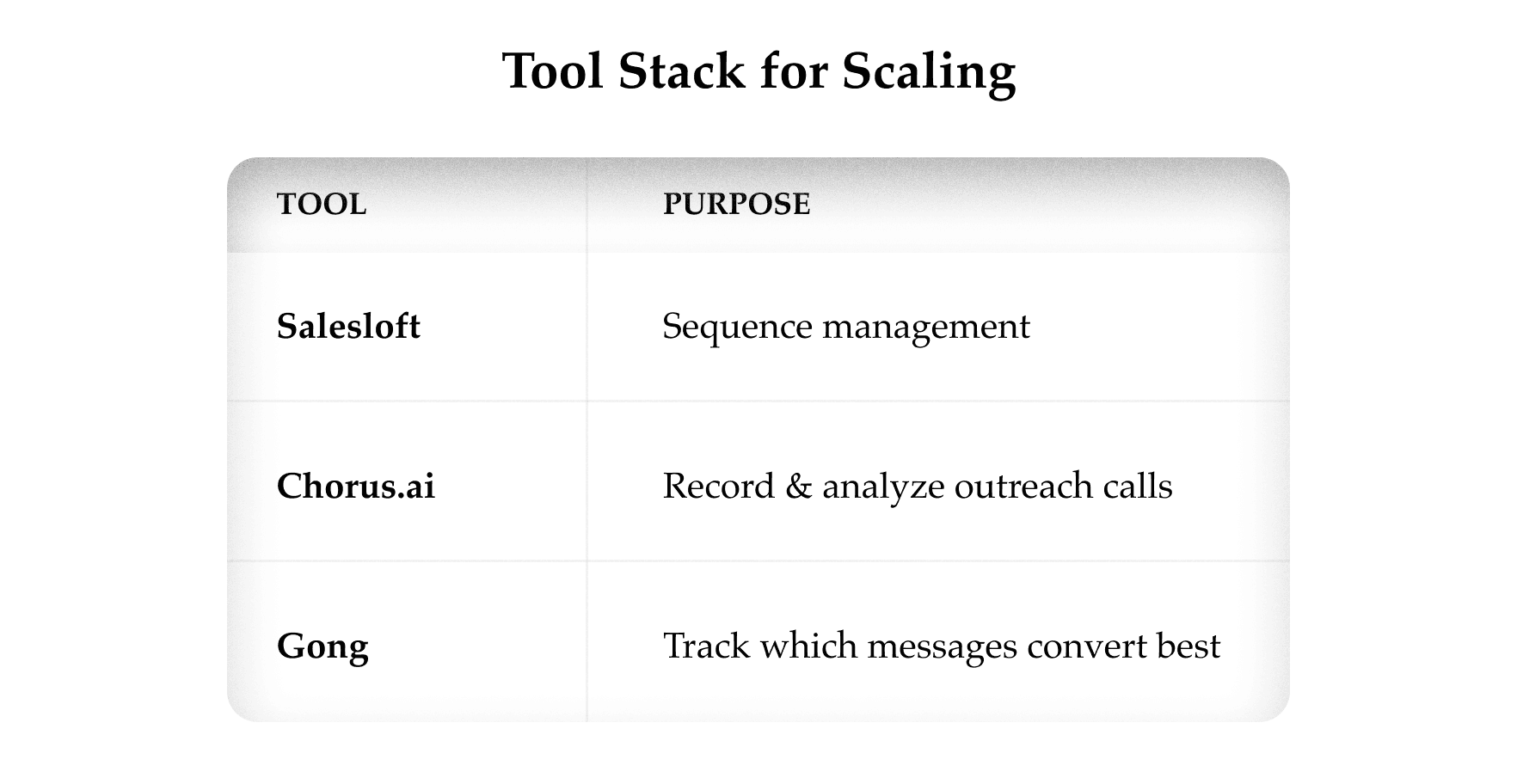
Final Tip: The 80/20 Rule of Scaling
- 80% consistency (same process, templates, metrics)
- 20% flexibility (allow reps to personalize based on their style)
Ditch the Cold, Embrace the Warm
Alright, so the old-school sales playbook? Toss it out. That whole cold calling, mass email thing?
It's on its way out. The name of the game now is "warm outreach," and it's all about being human. Think of genuine connections, that give real value, and hit people up at the right time, instead of just blasting everyone.
When you consistently build familiarity, give before you get, and reach out when it actually makes sense, you're not just getting more replies.
You're building solid trust that leads to long-term client relationships. So, warm people up before you even try to sell, always lead with value, master the art of the friendly but persistent follow-up, and handle any pushback with a good dose of empathy.
Warm outreach isn't some trick but a new way to connect. Try being that go-to person, not just another salesperson.
Start building those relationships today, and get ready to see your sales, and your reputation, absolutely take off.
Never miss an update
Get all the news and updates about Outcome Driven, directly to your inbox.